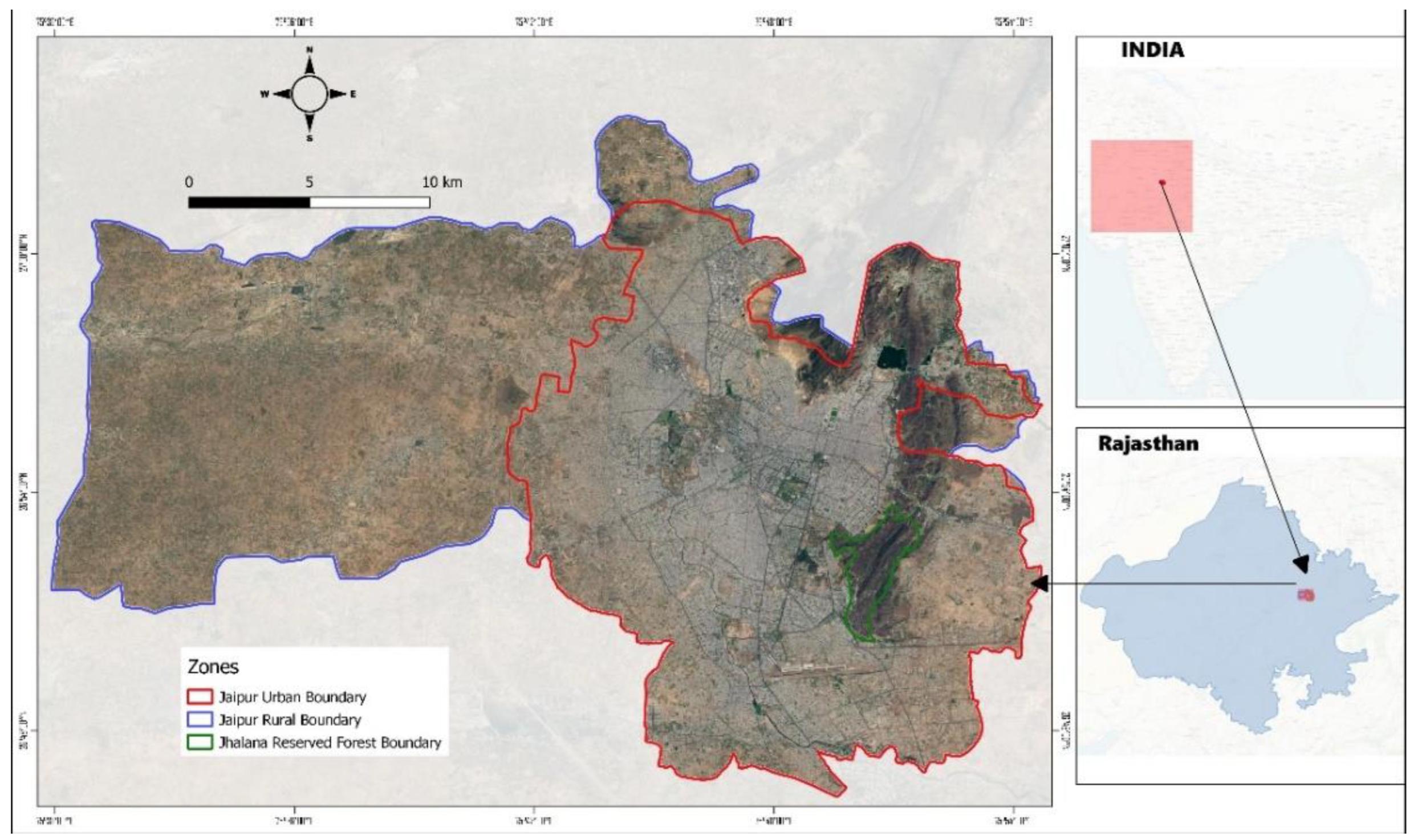Correction: Yosef et al. Land Surface Temperature Regulation Ecosystem Service: A Case Study of Jaipur, India, and the Urban Island of Jhalana Reserve Forest. Forests 2022, 13, 1101

Reference
- Yosef, R.; Rakholia, S.; Mehta, A.; Bhatt, A.; Kumbhojkar, S. Land Surface Temperature Regulation Ecosystem Service: A Case Study of Jaipur, India, and the Urban Island of Jhalana Reserve Forest. Forests 2022, 13, 1101. [Google Scholar] [CrossRef]
Publisher’s Note: MDPI stays neutral with regard to jurisdictional claims in published maps and institutional affiliations. |
© 2022 by the authors. Licensee MDPI, Basel, Switzerland. This article is an open access article distributed under the terms and conditions of the Creative Commons Attribution (CC BY) license (https://creativecommons.org/licenses/by/4.0/).
Share and Cite
Yosef, R.; Rakholia, S.; Mehta, A.; Bhatt, A.; Kumbhojkar, S. Correction: Yosef et al. Land Surface Temperature Regulation Ecosystem Service: A Case Study of Jaipur, India, and the Urban Island of Jhalana Reserve Forest. Forests 2022, 13, 1101. Forests 2022, 13, 1821. https://doi.org/10.3390/f13111821
Yosef R, Rakholia S, Mehta A, Bhatt A, Kumbhojkar S. Correction: Yosef et al. Land Surface Temperature Regulation Ecosystem Service: A Case Study of Jaipur, India, and the Urban Island of Jhalana Reserve Forest. Forests 2022, 13, 1101. Forests. 2022; 13(11):1821. https://doi.org/10.3390/f13111821
Chicago/Turabian StyleYosef, Reuven, Shrey Rakholia, Abhinav Mehta, Alap Bhatt, and Swapnil Kumbhojkar. 2022. "Correction: Yosef et al. Land Surface Temperature Regulation Ecosystem Service: A Case Study of Jaipur, India, and the Urban Island of Jhalana Reserve Forest. Forests 2022, 13, 1101" Forests 13, no. 11: 1821. https://doi.org/10.3390/f13111821
APA StyleYosef, R., Rakholia, S., Mehta, A., Bhatt, A., & Kumbhojkar, S. (2022). Correction: Yosef et al. Land Surface Temperature Regulation Ecosystem Service: A Case Study of Jaipur, India, and the Urban Island of Jhalana Reserve Forest. Forests 2022, 13, 1101. Forests, 13(11), 1821. https://doi.org/10.3390/f13111821





